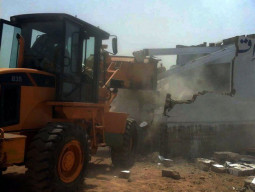
Lying on a bed at the Child Life Emergency Centre at Quetta’s Civil Hospital, three-month-old Baryal clung to her mother’s fingers as she struggled to breathe. She had pneumonia - a leading cause of child mortality in Pakistan.
Hundreds of kilometres away, Child Life Foundation (CLF) CEO Dr Ahson Rabbani and his team watched from the central control room of the NGO’s tele-health facility at Dr Ruth Pfau Civil Hospital, Karachi (DRPCHK). They could see Baryal’s mother trembling with worry - and the hope in her eyes.
It is this hope they want to keep alive in thousands of mothers in Sindh and Balochistan, as they work to improve emergency care for children who would otherwise be left suffering with sub-par healthcare.
With Dr Rabbani - who has a doctorate in social marketing - and other philanthropists, CLF has set up paediatric emergency wards in nine government hospitals in Sindh, as well as one in Balochistan. And now, they run these with the help of experts, experienced doctors and staff at DRPCHK, coordinating their efforts through telemedicine to try to save the lives of children like Baryal.
High infant mortality
Pakistan has a worryingly high infant mortality rate. Pneumonia alone kills over 250 children a day. But by the time it becomes apparent the child’s life is at risk, it is often already too late.
“Without timely diagnosis and proper treatment, the vital organs of these children begin to fail one by one. But at least half of the 0.4 million children dying in Pakistan each year can be saved if given the best emergency care,” says Rabbani. “So it is essential to bring paediatric emergency wards in government hospitals up to international standards.”
Before he changed paths, Rabbani spent a decade in multinational corporations. Perhaps this informs his view that these wards should be run almost like a factory, using an efficient, integrated system to provide the best possible care. “We can’t come up with a super-doctor. But we have the buildings, doctors and staff. They just need to work properly,” he believes. “And when everyone works together, the entire process will become efficient.”
Tharparkar - the sprawling district worst-hit by child mortality in Sindh - exemplifies the problem, with its hospitals in terrible shape.
“Though there are 61 basic health units and three taluka hospitals, 75 per cent of sick children at Mithi’s hospital come from other parts of Thar, and most are critically ill,” he explains. “The Sindh government says it will provide funds and support to try to control child deaths there, but just hiring doctors or investing money to build hospitals won’t do it.”
Instead, he says, the hospitals need to be managed better. “Children can get timely treatment closer to home if healthcare in Islamkot, Diplo and Nagarparkar is improved.”
That’s where he and his team come in.
Game-changer
According to him, telemedicine is a game-changer for paediatric emergency care in remote areas. “Since 2017, we have been providing assistance to district hospitals in this way,” claims Rabbani. “We realised that a third of paediatric patients in Karachi come from other cities. So, a communication system was set up at secondary hospitals.”
According to him, CLF aims to link up with paediatric emergency wards in all government district and taluka hospitals in Sindh by the end of 2020, expanding to all government hospitals in Sindh and Balochistan by December 2021.
The system, he says, is based on a hub-and-spoke model - and the hubs are in place. The spokes, too, exist in 18 of Sindh’s 30 districts, with most ‘spokes’ only two hours away from the ‘hubs’.
No plan?
Rabbani says CLF doesn’t really have a game plan. “When the floods hit in 2010, the children’s ward at DRPCHK was in bad shape, so we started working on it with the help of donors,” he narrates.
Then, they set up a paediatric emergency ward at National Institute of Child Health, where they saw patients flooding in from Korangi - their next destination. And why stop in Karachi? They moved on to Nawabshah, Sukkur and, on the request of the Balochistan government, Quetta too.
“Our model evolved in line with the needs of the time. Our only game plan is to keep working and moving forward,” he smiles. “First, we picked teaching hospitals - that’s where the poorest children come. We want to set up wards in all 43 teaching hospitals in Pakistan.”
Currently, the CLF is providing emergency care to over a million children in its 10 centres annually, working through rains and pandemics.
“Saving children’s lives is a mission everyone supports,” he says gratefully, adding that half the resources for running CLF’s wards in Sindh came from the provincial government. Balochistan’s chief minister too, he says, has assured them of full cooperation.
Per Rabbani, by 2019, Pakistan’s infant mortality dropped from 8.9 per cent to 7.4 per cent. “If we continue to work together with the same determination, it won’t be long till it reaches 4 per cent, like India and Bangladesh.”
This story is part of a weekly series that seeks to bring to light the unsung heroes of Karachi - the hawkers, traders, doctors, teachers, engineers, lawyers and daily-wage labourers. It is they who make Karachi the city of lights.
Published in The Express Tribune, November 9th, 2020.




1732256278-0/ellen-(1)1732256278-0-165x106.webp)
1725877703-0/Tribune-Pic-(5)1725877703-0-165x106.webp)












COMMENTS
Comments are moderated and generally will be posted if they are on-topic and not abusive.
For more information, please see our Comments FAQ